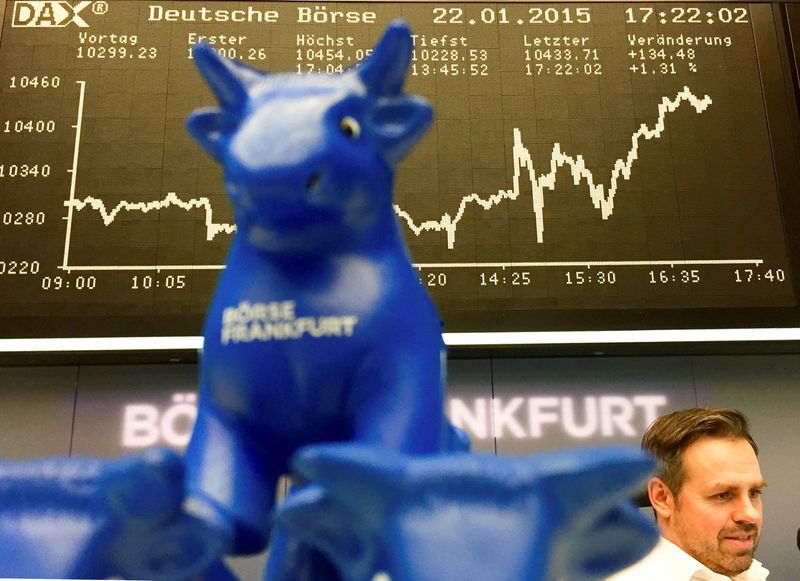
© Reuters
By Peter Nurse
Investing.com – European stock markets edged higher Thursday, stabilizing after losses earlier in the week, but sentiment remains fragile as investors fret about the impact of tightening monetary policy as economic growth slows.
By 03:35 ET (07:35 GMT), the in Germany traded 0.4% higher, the in France rose 0.2%, and U.K.’s climbed 0.6%.
European stocks received the benefit of modest gains on Wall Street late Wednesday and in Asia overnight, but a meaningful near-term recovery is unlikely.
U.K. consumer confidence slipped into negative territory for the first time since the pandemic lockdown in the middle of 2020, while grew more than expected in August.
Policymakers in Europe face the delicate task of balancing tackling soaring inflation on the back of high energy costs with risks of sharp slowdowns in their economies.
At the moment the inflation battle is uppermost in their minds, with the hiking interest rates by a hefty 75 basis points last Thursday, just weeks after a 50 basis point move, and promising several more steps over the coming months.
With this in mind, Barclays expects a recession in Europe in the first half of 2023, with the U.K. bank forecasting that the Eurozone economy will contract more than 1% over the calendar year.
In corporate news, H&M (ST:) stock fell 0.5% after the world’s second-biggest fashion retailer reported lower-than-expected quarterly sales, suffering by comparison with rival Inditex ‘s (BME:) strong numbers, as shoppers tightened their belts.
Novartis (SIX:) stock fell 0.4% after the Swiss pharmaceutical giant announced that it is the subject of an investigation by the country’s competition commission into patent use.
THG (LON:) stock fell 20% after the British online retailer issued a profit warning, saying that sales will miss guidance this year as the cost of living crisis weighs on consumer appetite.
Oil prices stabilized Thursday, trading in tight ranges after data from the showed that crude inventories in the U.S., the largest consumer in the world, rose more than expected last week, suggesting weaker fuel demand.
However, Wednesday’s report by the International Energy Agency has helped balance the market, as it stated the organization expects widespread switching to oil from gas for heating purposes, saying it will average 700,000 barrels per day in October 2022 to March 2023 – double the level of a year ago.
By 03:35 ET (07:35 GMT), futures traded 0.2% higher at $88.69 a barrel, while the contract rose 0.1% to $94.18.
Additionally, fell 0.7% to $1,697.70/oz, while traded 0.1% lower at 0.9971.


Be the first to comment